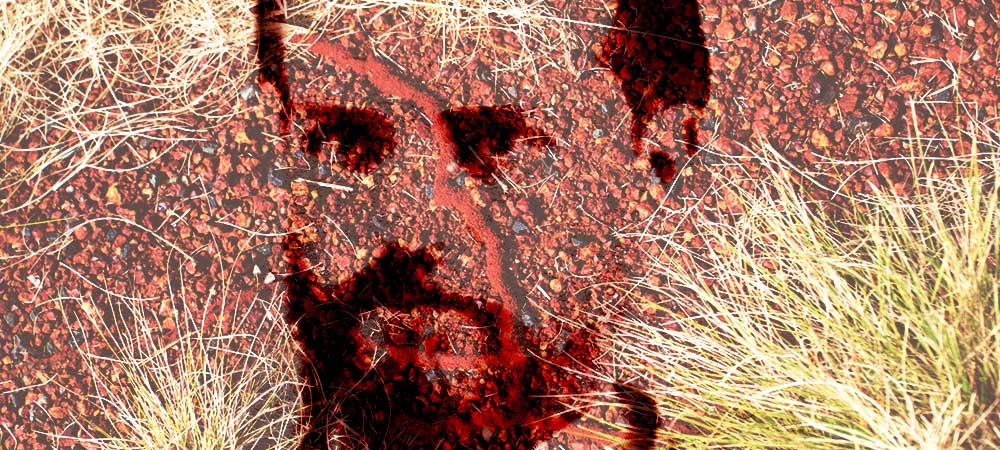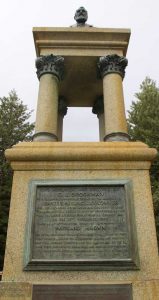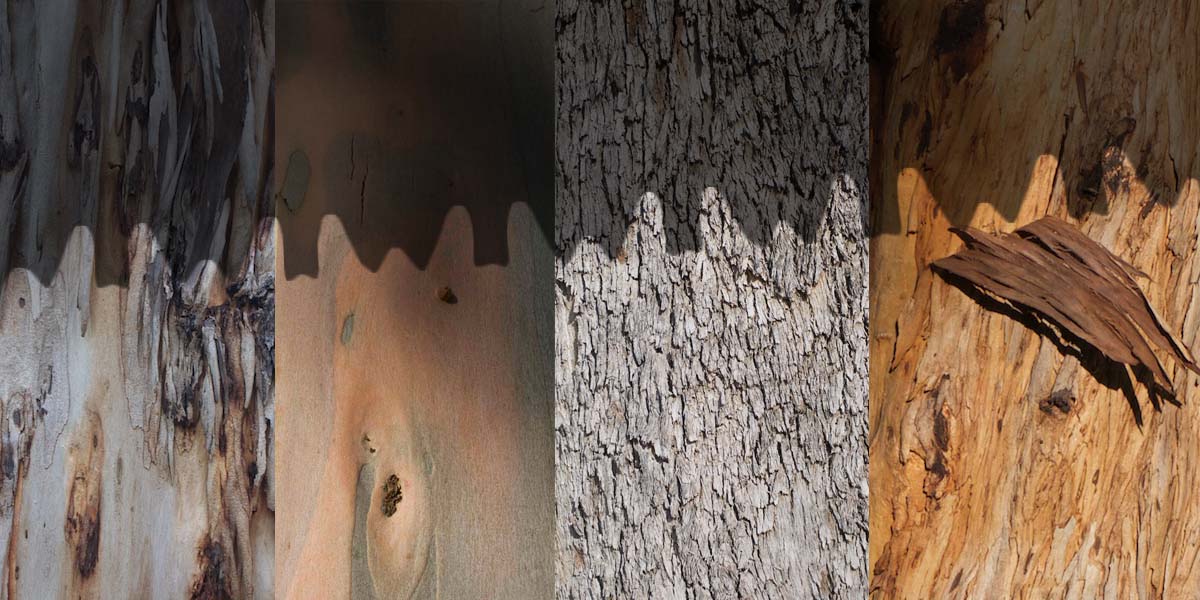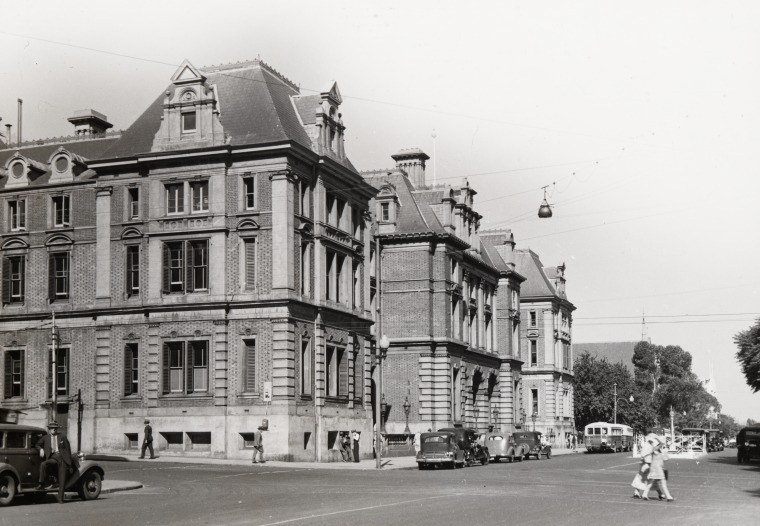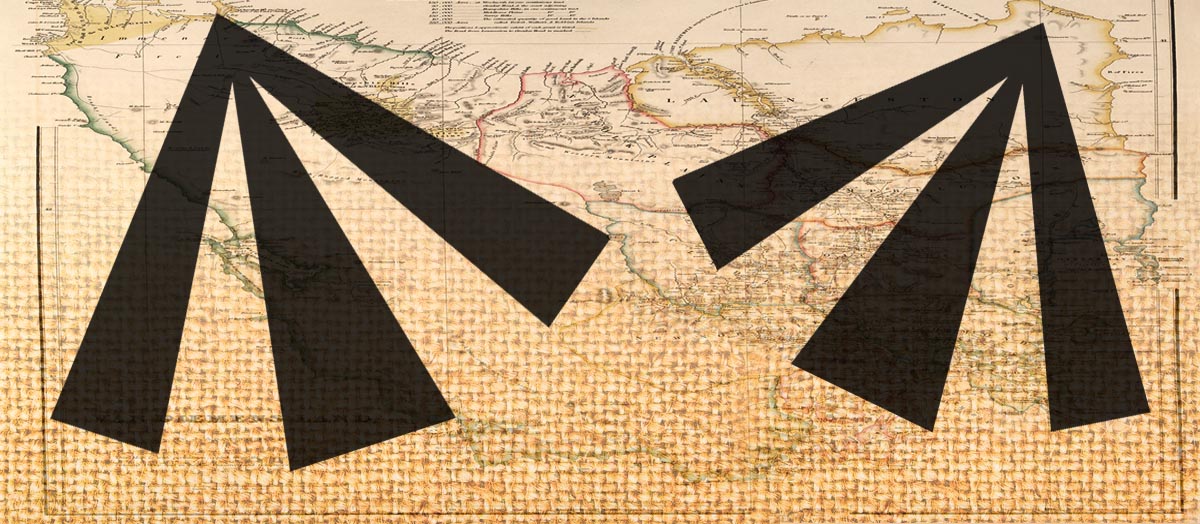Historians are not supposed to ventilate opinions like this. Actually, when studying for my degree we were also not supposed to write in the first person (Is there not an “I” in history?). I don’t believe we as historians have any licence to make things up. I also don’t believe we have any right to ignore evidence we find inconvenient to our beliefs. That’s why this particular article I have found so hard to write. But I do not love Maitland Brown, and on re-examining the evidence on which I base my opinion I am able to sharpen the focus of my intense dislike.
His parents arrived in the Swan River Colony in 1841, the same year as the first of the Dysons. Maitland Brown was born on the family property Grassmere in the York district east of Perth in 1843. At age twenty-three he was appointed the youngest magistrate in Western Australia’s history for the Greenough district. At age twenty-eight he was an unelected member of the Legislative Council nominated directly by the Governor for the first session of representative government in the Colony. Not re-appointed due to his fierce independence, he was elected in his own right as representative for Greenough, and then, when he felt that his evolving opinions did not match those of his electorate, changed seats to represent the region of the Gascoyne. In the run-up to responsible government that was finally achieved by Western Australia in 1890, it was widely believed that he would be the Colony’s first premier, being de-facto leader of the opposition to the Governor’s administration.
Instead, in 1886 he resigned to become regional magistrate for the Geraldton District, a post he held until shortly before his death in 1904.
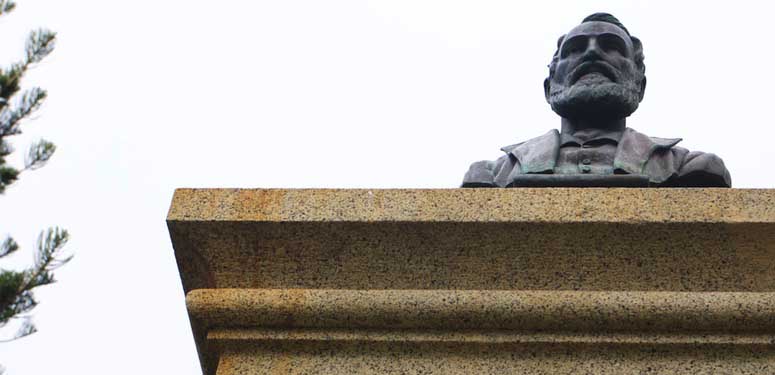
He was easily one of the most popular identities in the colony during most of his lifetime, enjoying the respect of those in the highest authority even if they did not always appreciate his (at all times) brutal honesty. That honesty of opinion could be indistinguishable from arrogance. But it can be difficult to disentangle the arrogance, pomposity and outright xenophobia actually perpetrated Brown from that ascribed to him by his enemies or exhibited in the attitudes of his champions.
A decade after his death, a statue was erected in his memory on the Esplanade in Fremantle, it was a commemoration of the event that made him famous not only in Western Australia but across the British Empire. This monument was recently (2017) brought back into public attention by a controversy on the other side of the world concerning memorials from the American Civil War that celebrated the slave-owning class that lost that particular conflict (even if they arguably won the peace). The argument was that they should be removed. Maitland Brown’s memorial was amended late last century to reflect the reality that in the intervening century, opinions (if not the facts on which those opinions were based) had changed about what made Brown a popular hero for the late nineteenth and early twentieth century. The changes on Maitland Brown’s memorial was held up as an example of the right way of dealing with such an issue. Here is the amendment:

THIS PLAQUE WAS ERECTED BY PEOPLE WHO FOUND THE MONUMENT BEFORE YOU OFFENSIVE.
THE MONUMENT DESCRIBED THE EVENTS AT La GRANGE FROM ONE PERSPECTIVE ONLY:
THE VIEWPOINT OF THE WHITE ‘SETTLERS’
no mention is made of the right of aboriginal people to defend their land or of the
history of provocation which led to the explorers’ death.
the ‘punitive party’ mentioned here ended in the deaths of somewhere around twenty aboriginal people
the whites were well armed and equipped and none of their party was killed or wounded.
this plaque is in memory of the aboriginal people killed at la grange. it also commemorates all
other aboriginal people who died during the invasion of their country
LEST WE FORGET MAPA JARRIYA-NYALAKU
Brown was among the first generations of settlers born and (most critically), educated during the Colony’s early years. The first settlers in the Western Australia could shoot Aborigines and steal their land (not necessarily in that order), then agonise about the morality of what they they had done, even as they loaded down their freshly cleared properties with sheep and cattle to an extent that soon the land was over-grazed and exhausted. Then they would have to start again in a new district, and new round of dispossessions. The Brown’s property in the York district was one such example. Pastures new were next found in the Champion Bay District (Geraldton and Greenough). Glengarry and Newmarracarra were the properties occupied by the Browns. But soon even this district was showing signs of exhaustion. The teenaged Maitland first came to prominence on an expedition into the Pilbara district commanded by Frederick Gregory where he got a river named after him.
Four more horses were safely landed this morning, and we were returning to the vessel for another pair when a party of fourteen natives made their appearance at the camp. At first they came boldly up, but on a gun being discharged as a signal for my recall, they appeared much alarmed, although they would not go away. […] I therefore tried at first to make them understand that we had taken possession for the present, and did not want their company; they were, however, very indignant at our endeavours to drive them away, and very plainly ordered us off to the ship. It was very evident that our forbearance was mistaken for weakness, and that mischief was preparing. I accordingly took hold of one of the most refractory, and compelled him to march off at double-quick time, when they all retired to some rocky hills overlooking our camp, from which it was necessary to dislodge them. Taking Mr. Brown with me, we climbed the first hill, which made them retreat to the next. Resting ourselves for a few minutes, and taking a view of the surrounding country, we were just on the point of returning to the camp, when we observed three armed natives stealing down a ravine to the horses, evidently with hostile intentions, as they shipped their spears on getting close enough to throw; we did not, however, give them time to accomplish their object, as we ran down the hill in time to confront them, on which they took to the rocks. Seeing that it was now time to convince them we were not to be trifled with, and to put a stop at once to what I saw would otherwise terminate in bloodshed, we both took deliberate aim and fired a couple of bullets so close to the principal offender, that he could hardly escape feeling the effects of the fragments of lead, as they split upon the rocks within a few feet of his body. […]
Journal of Francis Gregory, 17 May 1861
However it was Brown’s bushmanship rather than his bulletship that gained him the notice and respect of the powers-that-be.
Thus it was that in 1864, aged only twenty-two years of age, he was appointed by the Governor to lead the expedition to find three explorers gone missing in the Kimberly region. The country was south of present day Broome, near Bidjydanga (which is the reclaimed name of a settlement the colonisers insisted on calling LaGrange) One of the missing men was James Harding, who had been a colleague and friend of Brown on Gregory’s expedition. Harding stole the name of Ngurin, a river sacred to both the Yindjibarndi and Ngarluma people in the Pilbara.
During the 1980s a dam on that river also bearing his name destroyed many sacred sites. The cruel irony for the custodians of this land was that because the sites were sacred, they were not permitted to discuss them with the uninitiated. Even then, betraying a sacred trust to white anthropologists would probably have not saved their country from the politicians in Perth, heirs as they were of Maitland Brown.
From the journals recovered from the bodies of Panter, Harding and Goldwyer by Brown, it is clear that the three had barged into a sacred ceremony of some sort for the local Karrajarri people and rather than obeying the message clearly received by the intruders to go away, the intruders fired shots at them instead, forcing the locals to flee. With the sublime arrogance that only nineteenth century men of European extraction could possess, they seemed incapable of perceiving this might be provocative, nor that retaliation could possibly be meted out to them for this infraction. Hence, a few nights later, the three were bludgeoned to death in their camp as they slept.
Maitland Brown had been given authority by the Governor to take any action he chose, so his first act was to kidnap an Aboriginal man as a translator. After that man escaped, he was recaptured the next day before Brown could carry out the threat to hang each night, one of the many other prisoners he had in custody, until he was returned. This Aboriginal man was quite unconnected with the killing but nevertheless could speak the dialect so he was put in chains. The two Aboriginal guides who eventually lead Brown to the bodies tried to run away and were both summarily killed by being shot in the back.
Panter, Harding and Goldwyer’s remains were repatriated to Perth where they would receive possibly the largest funeral the colony had seen to that date. But Maitland Brown still had further work to do. He continued to hunt those who might have been responsible for the death of the Europeans. Lockier Clere (L. C.) Burges (junior) was a member of Brown’s expedition. He observed that
“the Aborigines [of the Kimberley] were accustomed to fighting Chinese and Kanakas who had in the past raided the coast, […], and tried to carry off the native women.”
[Cowan: p89]
So Brown would have understood that the Aboriginal people of this region would fight to defend themselves. So when he blundered into a camp and realised that an ambush was being prepared for him, he did not retreat to safety but instead charged, rifle and pistol blazing.
Afterwards, six Aboriginal men were outright dead and a further dozen so injured as “not expected to survive” (no white man later checked) so the death toll among the Karajarri from the settler records cannot be exactly estimated. One British horse was slightly injured. Brown had achieved all he had hoped for. Before he set out, he recorded his desires.—
“[…]But I trust that throughout the whole trip there will be no necessity for capture — that not only amongst this lot, but also amongst all others we may meet, the guilty natives, if such there are, will either attack or resist us in such a manner as will of itself justify us in exterminating them.”
[Cowan: p80.]
So he did, and thus he became a hero and role-model for all the xenophobes in the land. As one of Brown’s victims expired before him, he would write:
I had him questioned as to the names of the murderers of our late friends ; he said distinctly that he was one, and that B was another, but would not tell another name; he never uttered a groan, but died as he had lived—a savage.
The Perth Gazette and West Australian Times, 19 May 1865, Page 3
The journal of Brown’s punitive expedition was published unexpurgated in the local paper on his return to Perth. Some of the more thoughtful, including those in officialdom, did question Brown’s judgement, not only of his actions, but of the wisdom of so honestly telling what he had done. Nevertheless, Brown was now a local hero, and what was even more important, of a respectable family and a property owner to boot. He was appointed Justice of the Peace and a Regional Magistrate the very next year. His meteoric political rise (nearly) to the top had begun.
There was a rising cohort among the settler population that had been born in Western Australia and while they might identify as British, their place in Western Australia was all they knew, and while they might be only a tiny portion of a British Empire, in the western third of the Australian continent, it was here they would rule as the biggest fish in a very small pond. The path towards representational and then responsible government in Western Australia had begun. As the native-born white-men’s authority increased, so did their intolerance for anyone who wasn’t them. They bridled under regulations imposed by outsiders, that seemed determined to thwart them murdering whoever they felt like. Maitland Brown was their champion when he defended former expedition member L. C. Burges’ right to have shot to death an aboriginal man in the north over the theft of a saddle. Burges was sentenced to five years imprisonment for manslaughter (remitted to twelve months). This conviction was considered an outrage by the colony at large. I’m not terribly proud to see James Dyson’s name on the petition for the conviction to be overturned. (It might be son Joseph, but I doubt it) Certainly no white man has ever permitted to be sentenced to a heavy penalty (even if he can be convicted for it) for this crime in this state again— even to this day. Please, someone send me some evidence that I’ve got this wrong.
Brown’s family arrived in the colony the same year as James Dyson, but with immeasurably more assets. They had the cold hard cash to buy their first property already established in the Avon valley on arrival, and the family connections to form ties to the land owning elite. Peter Cowan, in his biography of Maitland Brown, notes that while the landowning squatter class of which Brown was the epitome appeared wealthy on the surface, they still had to work extremely hard to maintain it. [p. 65] So they may well have done, but they still operated from a position of privilege denied to those who had nothing. Brown was an opponent of Responsible Government (versus Representative Government, which he participated in) as he did not believe non-property owners (i.e.: riffraff ) should have any citizenship rights at all.
Brown eventually changed his mind on responsible Government and seemed destined to become the Colony’s first premier. But he did not. A combination of economic, family and personal issues combined— not to necessarily defeat him— but to induce him to chose another path, and as Resident Magistrate for Geraldton he virtually was the government of that district (according to the Australian Dictionary of Biography).

And now comes the reason I write about a subject I find so personally repugnant. At the very height of his (quite frankly) terrifying influence overt the public life of Western Australia, a scandal broke that demonstrated there were limits to even his influence, and that maybe not all white Western Australians were so enamoured with their hero. And it seems James Dyson might just have played a role in his downfall, just as Brown or his many supporters, in the aftermath, might have had a hand in his.
So it might be concluded that partly due to my Dysons, Maitland Brown did not become Western Australia’s first premier. Instead we got the Forrest family.
Oh f—.
